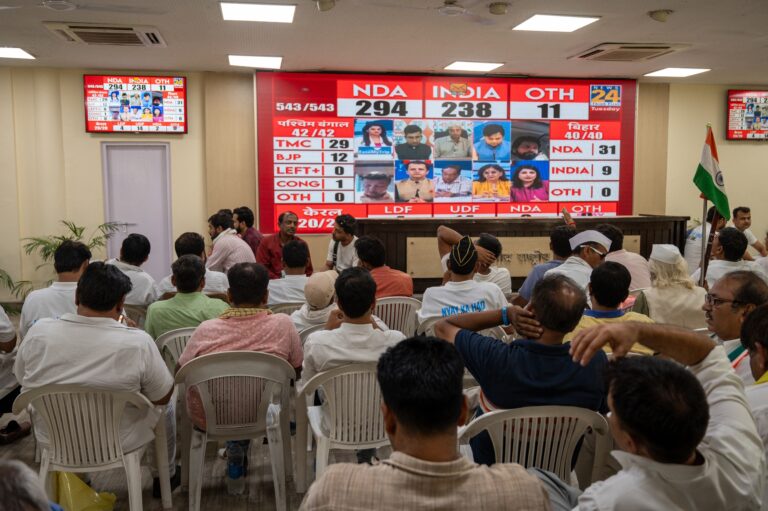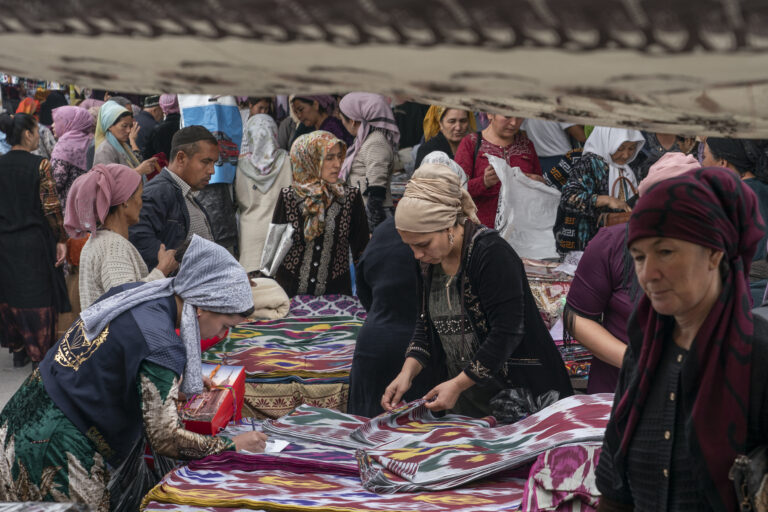Could Green Industry Unite the BRICS and Save the Planet?

Muhammad Zulfikar Rakhmat is the Director of the China-Indonesia Desk and the Indonesia-MENA Desk at the Center of Economic and Law Studies (CELIOS), Bhima Yudhistira Adhinegara is Executive Director of the CELIOS and Yeta Purnama is a Researcher at the CELIOS.
When the BRICS group expanded in 2024 to include Indonesia, the United Arab Emirates, Iran, Egypt, and Ethiopia alongside Brazil, Russia, India, China, and South Africa, critics wondered what such a wide-ranging coalition could possibly agree on. Their political systems differ, their economies compete, and their strategic alignments often diverge. Yet a new area of convergence is quietly emerging: green industrial policy.
Together, the ten BRICS nations account for more than fifty percent of the world’s carbon emissions, forty-five percent of its population, and around thirty-five percent of global GDP when measured by purchasing power. These are not just numbers — they are indicators of planetary leverage. If the BRICS countries coordinate a shift toward renewable energy and low-carbon industry, the world has a chance to meet the climate target of limiting global warming to 1.5 degrees Celsius. If they do not, that goal becomes nearly impossible.
But the green agenda is not only about emissions. Across BRICS, climate policy is increasingly being reframed as a national strategy – a way to reduce import dependency, create jobs, attract investment, and build industrial competitiveness. Green industrial policy – the active use of government tools such as public finance, trade protection, tax incentives, and skill-building to accelerate clean energy sectors – is moving to the center of economic planning.
China, with its vast lead in electric vehicles, batteries, and solar power, has embedded the green transition deep into its manufacturing ecosystem through the “Made in China 2025” plan and successive Five-Year Plans. India, too, has launched a suite of initiatives, from production-linked incentives for solar and hydrogen to major targets for electric mobility. Brazil is pushing forward with a new ecological industrial plan centered on biofuels, clean aviation fuel, and domestic EV manufacturing. South Africa has unveiled a just energy transition strategy focused on renewables, local supply chains, and mineral beneficiation. Indonesia, rich in nickel and geothermal energy, is becoming a key EV and battery player in Asia. Even the oil-rich UAE is positioning itself as a hub for solar manufacturing and low-carbon fuels.
These national strategies show ambition, but they remain fragmented. What’s missing is a collective framework – a shared industrial policy strategy that links the capacities, resources, and goals of BRICS countries into a more integrated whole. The potential gains are enormous.
A coordinated green supply chain could be the foundation. BRICS members together hold key parts of the clean energy value chain: nickel from Indonesia, manganese and platinum from South Africa, copper and biofuels from Brazil, solar and battery production from China, and emerging markets for deployment across India and Africa. But without alignment, these inputs often flow outward to the global North, where value is added. BRICS countries should instead invest in cross-border industrial integration – battery plants in Indonesia with Chinese and Indian backing; solar panel production spanning South Africa and the UAE; green hydrogen corridors linking India and Brazil.
Finance is a second pillar. Industrial policy is capital intensive – factories, R&D centers, transmission lines, and logistics all require upfront investment. Many BRICS countries face fiscal constraints, while international capital markets remain skewed by risk perceptions and currency volatility. The New Development Bank (NDB), founded by BRICS in 2015, could play a far more strategic role by channeling concessional finance into joint green manufacturing ventures, especially in countries like South Africa, Egypt, and Indonesia. Bilateral investment is already flowing: UAE firms are backing biofuel and critical mineral projects in Brazil; Chinese companies are investing heavily in Indonesian EVs. But these investments need to be organised into a broader framework that prioritises shared technology, regional value chains, and inclusive growth.
Technology and skills transfer are just as essential. China’s rise in clean technology was fuelled by decades of investment in technical education, vocational training, and research institutions. Other BRICS nations must now build similar capacities – and they can do it faster through cooperation. Already, Chinese solar firms are establishing training centers in the UAE. In Brazil, provincial governments are requiring EV manufacturers to invest in local R&D and supply chains. A BRICS-wide initiative on green skills, joint research, and technology exchange would create the talent base needed to drive the energy transition from the Global South.
Finally, green industrial policy opens the door to long-overdue financial innovation. Cross-border clean energy trade and manufacturing are often exposed to exchange rate risks – especially when denominated in US dollars. The recent experiments with currency swaps, local-currency trade settlements, and even digital central bank currencies among BRICS members point to a future where green cooperation is less dependent on the dollar. A green de-dollarisation strategy – financing solar panels, batteries, and hydrogen in local or digital currencies – would help insulate projects from external shocks and reduce the cost of capital.
Of course, contradictions remain. Russia and Iran are deeply tied to fossil fuel revenues. The UAE, for all its green investments, is still one of the world’s top oil exporters. But even within these petrostates, diversification is becoming an imperative. Moscow, reeling from sanctions, needs new industrial allies. Tehran seeks green tech partnerships as it faces climate shocks and economic isolation. The UAE is rapidly expanding its solar, battery, and clean fuel manufacturing base, aiming to become a regional hub.
The lesson is this: green industrial policy may not erase geopolitical tensions, but it offers a platform for mutual interest. A BRICS that builds EVs, solar panels, and hydrogen systems together is a BRICS with real, durable economic interdependence – and far greater credibility as a force in global climate governance.
Green industrial policy is the bridge. It connects decarbonisation with development, competitiveness with cooperation. If BRICS wants to shape the next global economic order – one that is more multipolar, more sustainable, and more equitable – it should start with building green industry together.
The clock is ticking. The technologies are ready. The markets are vast. What remains is political will.
The opinions expressed are those of the contributors, not necessarily of the RSAA.






